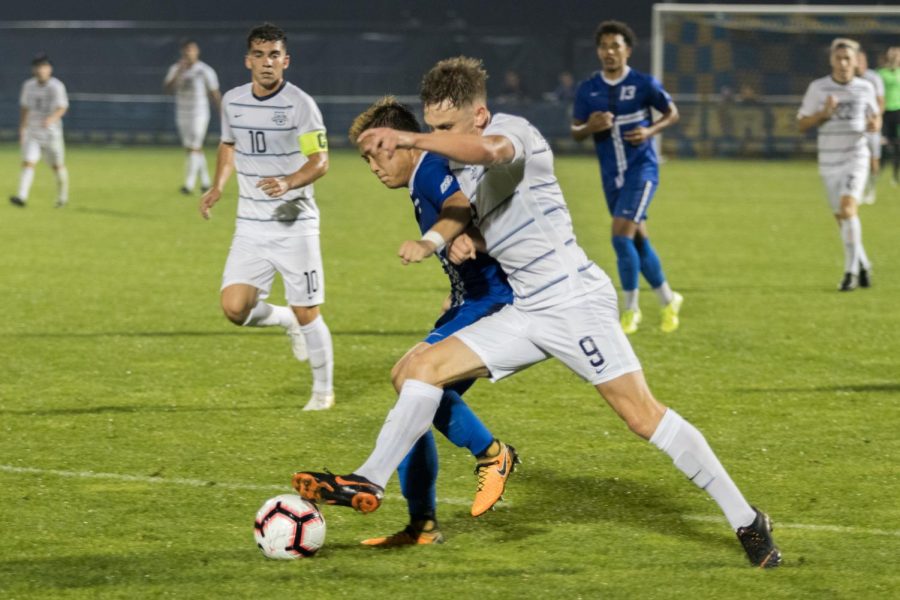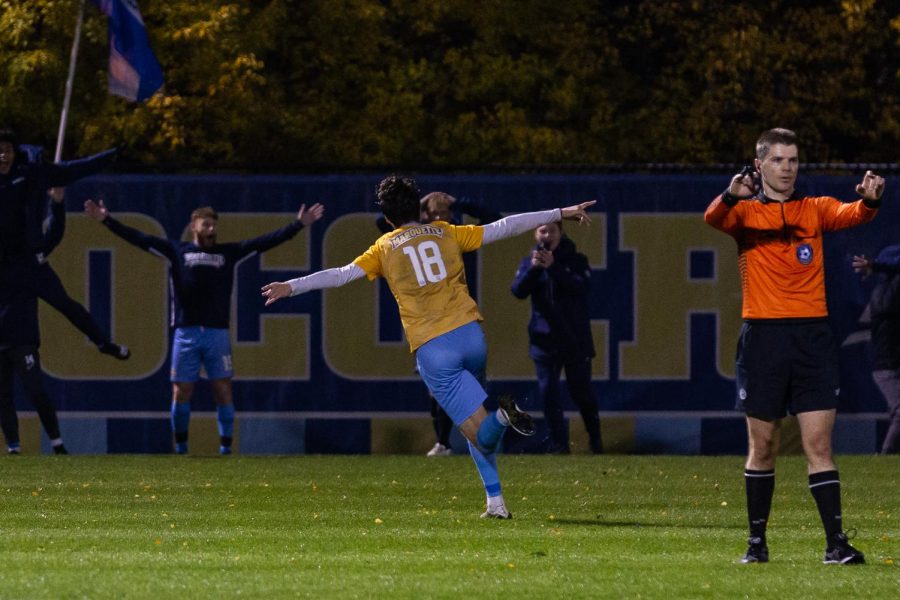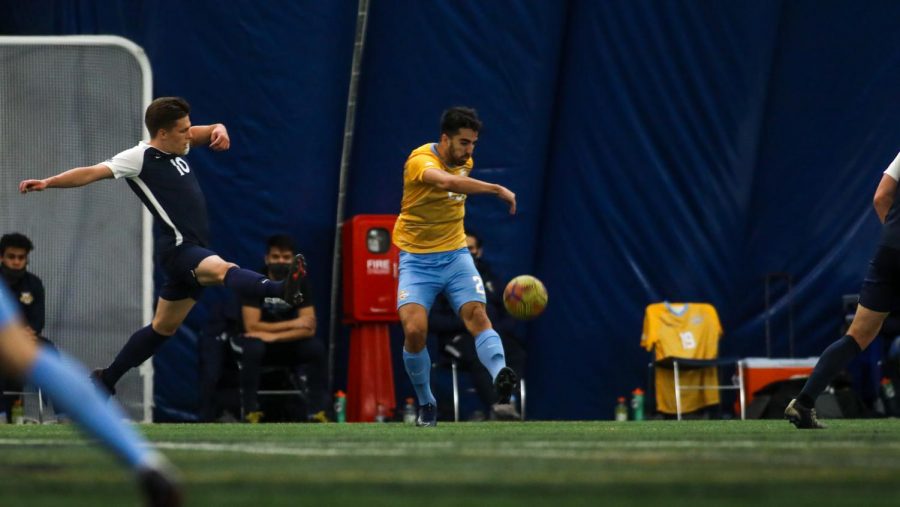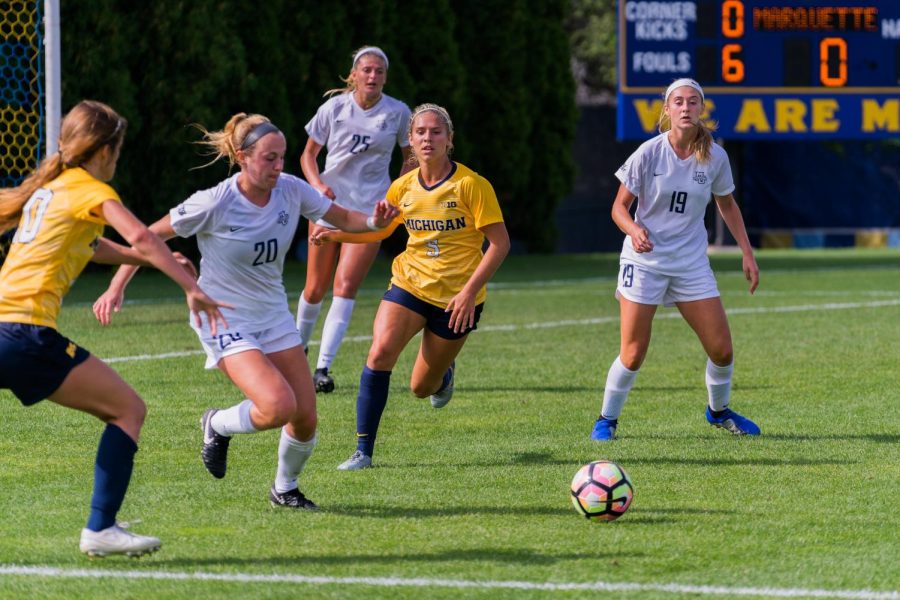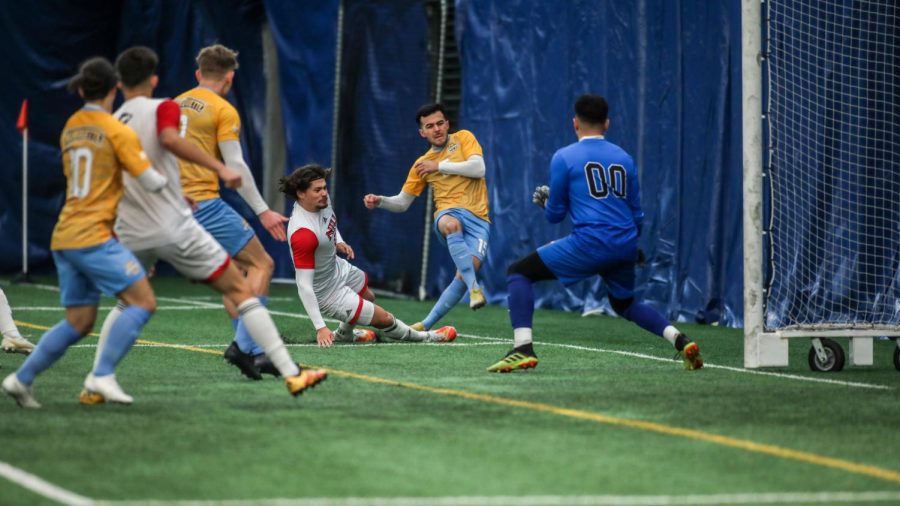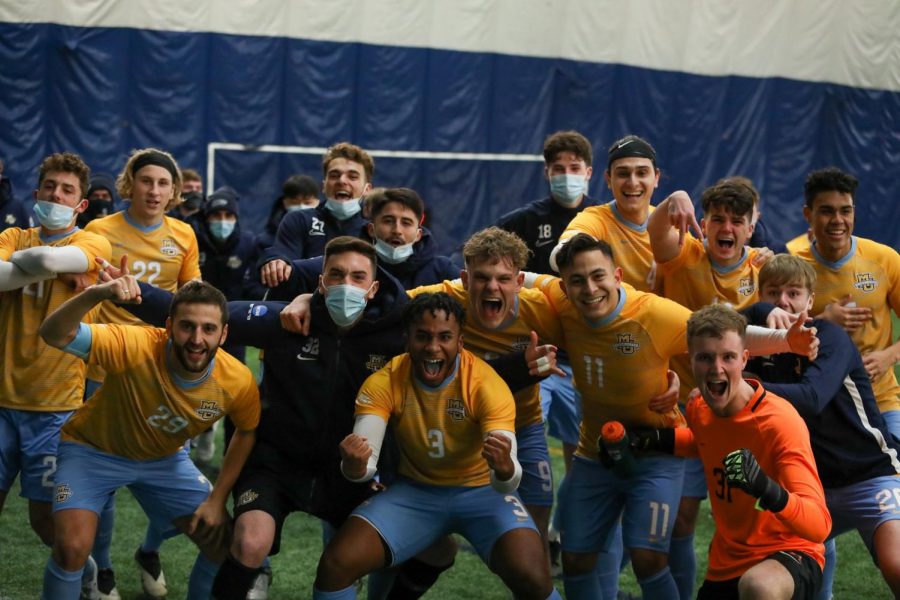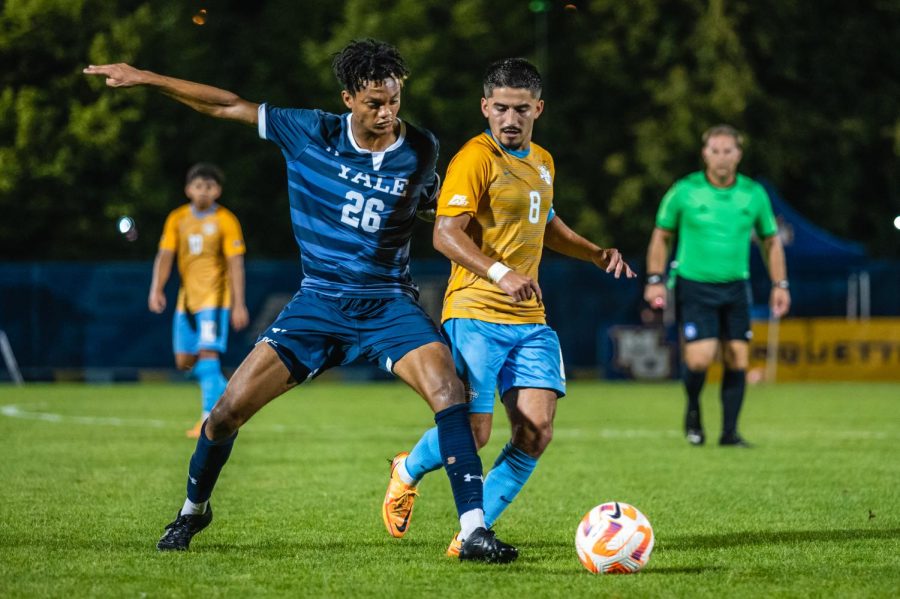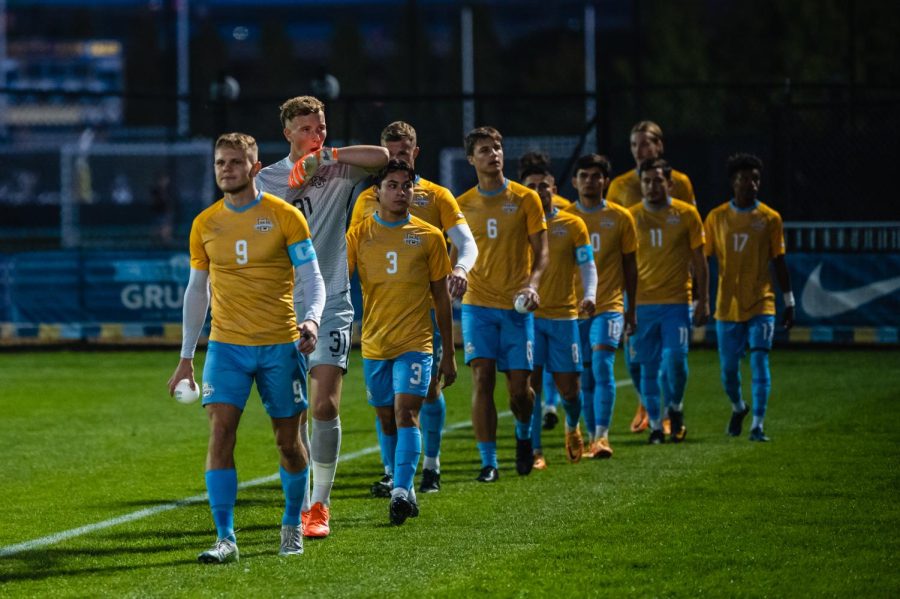As the COVID-19 pandemic has made its way into the United States this past spring and summer, travel restrictions were implemented in attempt to limit the spread of the virus. For international players on the men’s soccer team, these changes made the journey home and back to campus very difficult.
Coming into the season, 26 of 29 players on the squad are from out of state. Of those 26, 11 came from a different country. This season’s team features players from Germany, England, Italy, Brazil, and Sweden, but a new 19-man roster has been created for the potential spring season.
While many team members come from over 4,000 miles across the Atlantic Ocean, junior forward Lukas Sunesson said traveling through the air is usually a relatively easy task without a pandemic to account for.
“(Travel’s) pretty smooth,” Sunesson said. “I usually take like one flight from Chicago O’Hare straight to Stockholm, just nine hours. Super simple — and smooth.”
Sunesson, who is from Taby, Sweden, had a difficult time getting back home this past March when the pandemic started rapidly spreading across the globe.
“All the flights got cancelled, so it was like one flight per week when I first left in March. So when I got to the Chicago airport, I had to wait there for 13 hours before I could get on my flight,” Sunesson said. “I flew to Copenhagen, had to wait in Copenhagen for seven hours, and then I could fly back home to Sweden. So it was a long trip for sure.”
Upon return to the U.S. this fall, Sunesson had to quarantine himself for two weeks prior to making his return to campus. He also had spent more time in Sweden than expected due to the fact students were not yet able to fly back to the United States until earlier this summer.
However, other players did not even have the chance to make a trip home this summer due to the outbreak.
“I actually never went home this summer because of the pandemic,” junior goalkeeper Cedrik Stern said. “I had flights booked, which I cancelled because I didn’t want to take the risk of first of all giving the virus to my grandparents, who live in the same house as I do, and second of all, we were still assuming that we were going to have a season, so I didn’t want to risk that.”
With more and more things shutting down, including the cancellation of his summer team and travel home not being advised, Stern said he found other ways to stay busy here in the US.
“I needed something to stay busy, so I did a lot of stuff with my roommates,” Stern said. “We went on a road trip and I took a job. I got a job, which was good, which gave me a regular schedule, kept me busy, gave me something to do for sure, so that was good for me.”
Stern does not have an exact timetable of when he will be home next, but said he hopes to get home as soon as in-person classes (are expected to officially) end — around Thanksgiving. He said he is trying to have some more time at home this winter to make up for the time that he missed this summer.
Meanwhile, redshirt junior forward and Rotherham, England native Sam Thornton also spent the entire summer in the United States.
“I stayed in Minnesota ever since spring break,” Thornton said. “I essentially stayed here the whole summer, worked out, and trained.”
The team’s international players are not only used to traveling between Marquette and home, but also for games during the course of the season. Even after conditions improve with the pandemic, travel for BIG EAST athletic teams still might look a bit different.
“For our schedule, we do tend to travel (or) take flights to a few games, so I think (the pandemic) might change the dynamic a little bit,” Thornton said. “We could change the mode of transportation — driving to places, places that we can drive, that are a reachable time and distance away. … Just trying to limit the actual distance in traveling — I think that’ll probably be one of the biggest changes.”
No definite plans have been made yet, but both the men’s and women’s soccer teams may be able to have a season in the spring. While travel restrictions are still not advised and traveling is starting to be allowed with restrictions, flying will still look different for the months to come as staffing and airport operations have been altered, and masks must still be worn throughout the travel experience according to the Transport Security Administration.
This story was written by Nick Galle. He can be reached at nicholas.galle@marquette.edu or on Twitter @thenickgalle.

